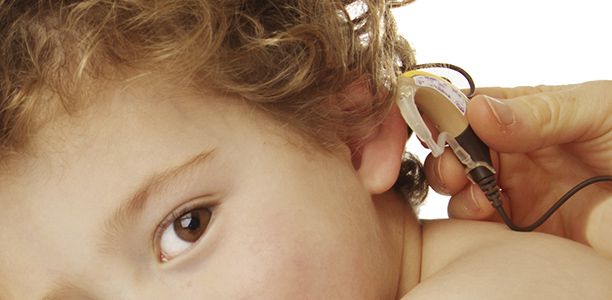One cochlear ear can give a child the gift of hearing, but a new study shows two can help them excel at school.
A world-first study of deaf primary school students has revealed children with double cochlear implants performed much better on exams than children with only one.
Children using bilateral cochlear implants achieved significantly higher scores for maths, oral language and written language. And the younger the child had received the second implant, the bigger the improvement.
As a result of this research, the New Zealand Government now fully subsidises bilateral cochlear implants. There is still work to be done in Australia to achieve this.
Children with profound hearing loss have historically learned at about 55 to 65% of the rate of children with normal hearing. They tend to fall behind further every year they are at school.
Bilateral (two) cochlear implants can be a huge benefit to those children, yet this operation is not publically funded in Australia.
Dr Julia Sarant from the University’s Department of Audiology and Speech Pathology, is lead author of the new study. She says it’s vital the Federal Government follow New Zealand’s example and fund double implants, to allow hearing impaired children the best chance at school.
“Cochlear implants are not cheap. One implant costs just over $30,000. But they make such a huge difference to the lives of children,” Dr Sarant said.
“With two ears, the brain can use the auditory information from each ear to compare and process sound. Two implants give children the chance to locate different sounds, identify who is speaking in a group, and filter out background noise, even in noisy places.
“With only one ear, children find learning very difficult because they tend to miss information amongst the constant buzz of the classroom and in the playground.
“Low literacy, unemployment, social isolation, and depression can be lifelong repercussions of poor academic outcomes. It is crucial that our research leads to better government funding policy and best clinical practice.”
In Australia, to get a second implant, parents need to have private health insurance, or they need a discretionary decision made to dip in to those government funds allocated for single cochlear implants, if there are enough.
The study was conducted in partnership with The University of Melbourne’s Department of Audiology and Speech Pathology, Cochlear Ltd and The Royal Victorian Eye and Ear Hospital.
Bilateral Cochlear implants: funding facts
In Australia:
- Public funding does not exist for simultaneous bilateral cochlear implants as a separate operating procedure. The second implant borrows from the traditional funding for all implants at the hospital.
- Public funding exists for a capped number of implant surgeries per year in the public system. It is up to the treating team, the patient and their family to decide whether to implant bilaterally.
- Work is still required to secure sufficient public funding for simultaneous bilateral cochlear implants.
- For families with private health insurance, a second implant is insured for, but again the procedure for bilateral cochlear implants is not well covered by existing MBS items.
Internationally:
- Not every developed country offers bilateral implant funding.
- The UK does, under certain conditions.
- Most European countries do, but not all states in the USA cover bilateral cochlear implants.
- Washington State recently undertook a review and decided to fund bilateral cochlear implants.
- The NZ government decided to fund bilateral implants for all children up to age six in May 2014 as a result of the evidence of the University of Melbourne study. They are now ahead of Australia in their standard of clinical care.
- The majority of the world does not cover bilateral cochlear implants in children as standard treatment, but it is becoming standard care in developed markets. Countries with large populations in developing markets are still focussed on one implant only, such as India, China and Indonesia.
(Source: The University of Melbourne)










